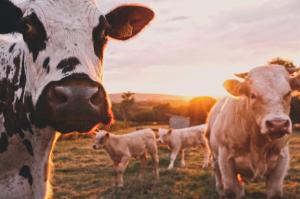Ecosystems such as forests, heaths and surface waters are more sensitive to atmospheric nitrogen pollution than previously thought, according to a new report published by the Coordination Centre for Effects under the UNECE Convention on Long-range Transboundary Air Pollution (Air Convention).
The report Review and revision of empirical critical loads of nitrogen for Europe provides revised and updated empirical threshold values (critical loads) for harmful nitrogen inputs to natural ecosystems. It is based on an analysis of new scientific data from the past 10 years by a team of 45 leading European nitrogen and ecosystem experts. In 40% of the ecosystem types reviewed, critical loads of nutrient nitrogen had to be adjusted downwards (more sensitive), while in considerably less ecosystem types the value was adjusted upwards.
Over the past 100 years, the massive use of fertilizers and the production and use of manure in agriculture have led to significant nitrogen emissions to air and releases to water and land. Burning of fossil fuels (in vehicles, power plants and industry) is another source of nitrogen emissions. Among the dire consequences of these nitrogen emissions are air, soil and water pollution that damage human health, threaten biodiversity of forests and rivers, and lead to coastal and marine pollution that exacerbates the effects of climate change. Earth system scientists say that the world’s planetary boundaries for interference with the nitrogen cycle have already been surpassed, meaning that there is a high risk of irreversible changes to ecosystems and biodiversity.
The revised nitrogen threshold values emphasize once more the need to reduce the amount of nitrogen entering the environment. Emission reductions are most urgently needed where sensitive ecosystems are located within or around agricultural regions with intensive farming of livestock or close to high-traffic motorways or heavy industry.
In the Netherlands, for example, the country with the highest livestock density in Europe, the government recently announced plans to compensate farmers for reducing their number of livestock to lower nitrogen pollution, in response to a court decision. This may serve as an example for other countries with high livestock densities.
Ammonia (NH3) and nitrogen oxides (NOx) are regulated under the Air Convention’s Protocol to Abate Acidification, Eutrophication and Ground-level Ozone (Gothenburg Protocol). Several guidance documents on sustainable nitrogen management have recently been developed under the Convention, which can inform further action by Parties. This can help foster a “nitrogen circular economy” and increase the efficiency of nitrogen use throughout the lifecycle, through, for example, new technical measures in agriculture for manure management.


